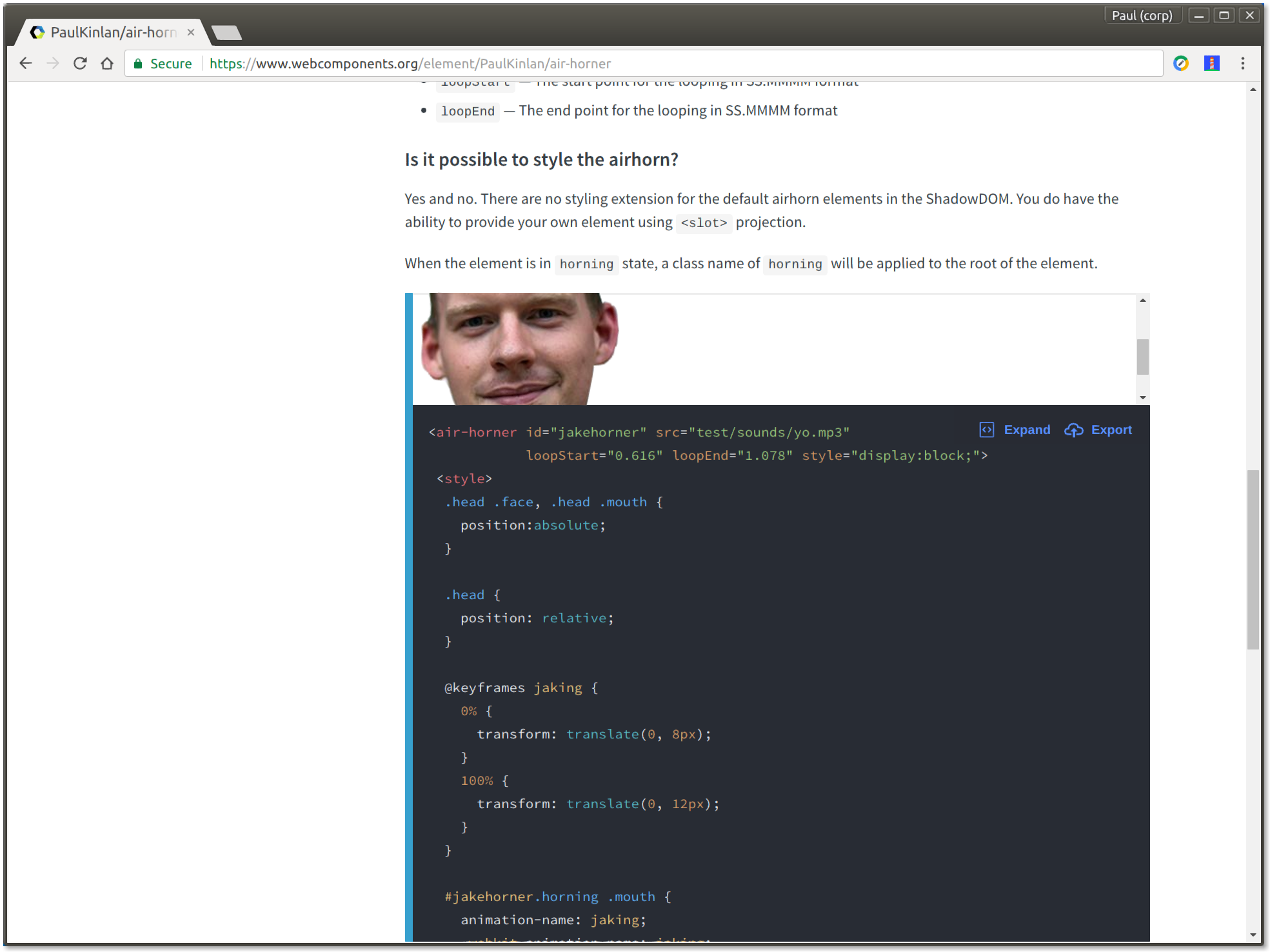I've been building a web component or two recently and whilst I've been learning the in's and out's of the ecosystem (mostly by perusing webcomponents.org) I've found that it is quite hard to understand and quickly grok the interface for elements.
WebComponents.org solves some of this with a great feature. It encourages the component author to document their element in the README and it makes it simple to include inline demos of the element in action so that you can quickly see how the element functions and how to achieve that goal.

For me, a large issue is that a README is not a reference and it is not an interface guide and none of which are mandatory, meaning that every element is documented differently.
Polymer does go a step further. Polymer encourages developers to document their
element using
jsdoc syntax and whilst it
is embedding this in an html import, it is transportable to the single class
method I chose for building web components.
I believe that we should be documenting and defining the interface for their own components consistently and in the same form that the platform uses to define the DOM, notably Web IDL.
Web IDL enables tooling to be able to quickly parse my element's API and then potentially provide auto-complete or other developer utilities not to mention that it can be quickly parseable by people.
I took a stab at defining the
IDL
for my <share-button> and I think it looks pretty sensible and neatly defines
it's API surface.
[Constructor]
interface ShareButton : HTMLElement {
attribute DOMString href;
attribute DOMString text;
static getter DocumentFragment template();
static getter sequence<DOMString> observedAttributes();
void updateUrl(DOMString url);
void updateText(DOMString text);
void copyUrl();
void mailUrl();
void hide();
void show();
void toggleOverlay();
}
There are a number of issues. IDL can be a bit of a pain in the bum to learn and to work with. I am having trouble defining the events that my element exposes, and there is no way that I know of that enables me to define the styling interface that elements expose.
I think the benefits of a clear and consistent interface document outweigh some of the current limitations with IDL and I believe we should start to gravitate around a common form.
I would be interested to learn of any experiments or methods you have used to provide guidance on your element's API. Is WebIDL too restrictive? Is JSDoc the answer? I've seen some people use TypeScript definitions, how did that work out?
I lead the Chrome Developer Relations team at Google.
We want people to have the best experience possible on the web without having to install a native app or produce content in a walled garden.
Our team tries to make it easier for developers to build on the web by supporting every Chrome release, creating great content to support developers on web.dev, contributing to MDN, helping to improve browser compatibility, and some of the best developer tools like Lighthouse, Workbox, Squoosh to name just a few.
I love to learn about what you are building, and how I can help with Chrome or Web development in general, so if you want to chat with me directly, please feel free to book a consultation.
I'm trialing a newsletter, you can subscribe below (thank you!)




